People’s History: The Norman Bethune Square
A Brief History on an Often Forgotten Canadian Surgeon and Historical Figure
When you walk on Guy-Concordia St., near the Sir George Williams campus, it’s very possible that you’ll stroll past a marble statue of a man next to the Tim Hortons.
A popular spot among pigeons, the life-sized sculpture portrayed in a military uniform is of Norman Bethune, a Canadian surgeon.
Bethune and his monument are not well-known in Canada in part because of his devotion towards communism in a country staunchly opposed to the ideology during the cold war. It was only until the 70s that Bethune became more commonly known here decades after his death. This is contrary in China, where Bethune is a beloved historical figure and revered as a national hero in the foundation of the People’s Republic.
Here is the story of the man behind the statue and how one of China’s great revolutionary heroes made his way near our campus.
Bethune: His Life and Legacy
Norman Bethune was a Canadian surgeon, an advocate of universal healthcare and a member of the Communist Party of Canada. After having a near-death experience with tuberculosis in 1926, he took up thoracic surgery in Montreal at the Royal Victoria Hospital and later at the Montreal Sacred Heart Hospital.
During the 1930s, Bethune’s time as a surgeon in the city changed his views on medicine. He became disillusioned with surgical treatment, as he thought one of the main issues of healthcare was the commodification of medicine and the inaccessibility of treatment for those living in poverty
In a paper he published in 1982 for the Canadian Medical Association, Bethune made a strong statement on the situation of Canadian healthcare at the time: “There is a rich man’s tuberculosis and a poor man’s tuberculosis. The rich man recovers and the poor man dies. We, as a people, can get rid of tuberculosis, when once we make up our minds it is worthwhile to spend enough money to do so. Better education of doctors, public education to the point of phthisiophobia, enforced periodic physical and X-ray examinations, early diagnosis, early bed-rest, early compression, isolation and protection of the young are our remedies.”
Inspired by the Soviet model, Bethune began advocating for a universal healthcare system in Canada, but his advocacy fell on deaf ears by his peers in medicine and the federal government. Inspired by the Soviet model, Bethune began advocating for a universal healthcare system in Canada, but his advocacy fell on deaf ears by his peers in medicine and the federal government. That did not stop Bethune from providing healthcare to the poor working class, marginalized groups and youth, at the Children’s Art Group and the Montreal Group for the Security of the People’s Health.
During the Spanish Civil War, Bethune served as a frontline trauma surgeon, supporting the socialist Republican government. He was responsible for developing a mobile blood-transfusion service for frontline operations to help soldiers who were dying from blood loss.
Later on, the surgeon travelled to China during the Sino-Soviet and Japanese war. He provided surgical aid to the communist rebels, who were fighting against the Japanese imperialist army and the right-wing nationalist party of China, the Kuomintang. Bethune joined the Chinese Communist Party’s Eighth Route Army and helped to bring modern medicine to rural China, treating sick villagers and wounded soldiers on both sides of the battlefield.
During one of his surgical operations, he cut his finger which became infected. Not even two years into his expedition, Bethune died from blood poisoning on Nov. 12, 1939.
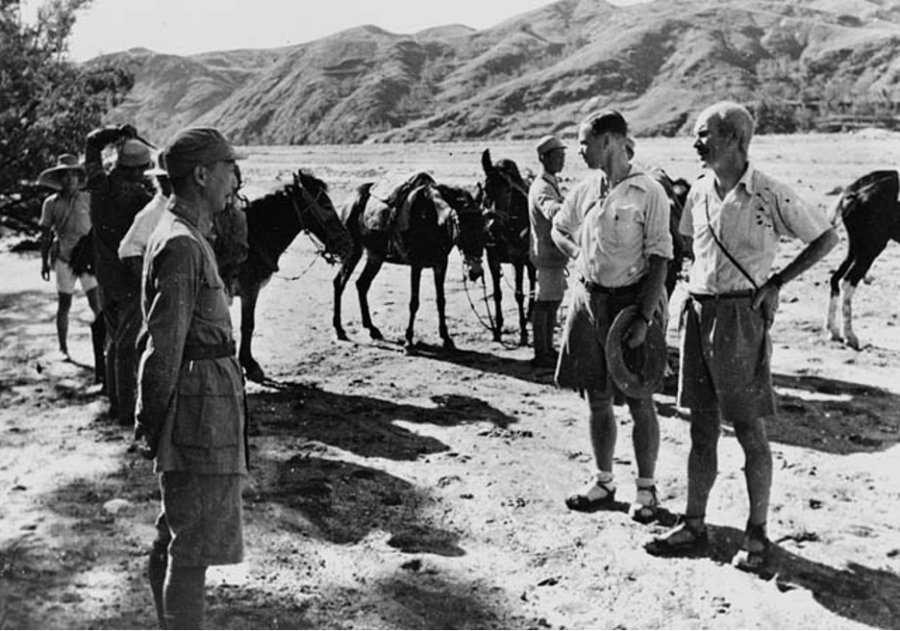
Bethune’s sacrifice during the Communist party’s war efforts earned him deep respect and martyr status from his allies and Mao Zedong, the chairman of the Communist party and the founder of the People's Republic of China. Mao honoured Bethune by writing an essay titled In Memory of Norman Bethune. In the essay, the Chinese revolutionary writes, "Comrade Bethune's spirit, his utter devotion to others without any thought of self, was shown in his great sense of responsibility in his work and his great warm-heartedness towards all comrades and the people." This essay is still read by elementary school children in China today. Comparatively in Canada, Bethune’s status as a communist tarnished his reputation back home. His legacy as a surgeon in Montreal was forgotten overtime until 1971 when Canada began its diplomatic relationship with China.
To honour his legacy, there are there are numerous statues and memorials in China. There are also hospitals and foundations in the country under his name, such as the Norman Bethune International Peace Hospital and the Norman Bethune Medical School.
He is buried in China at the Cemetery of Martyrs in Shih-chia-chuang. A ceremony is held at his tomb yearly on the anniversary of his death.
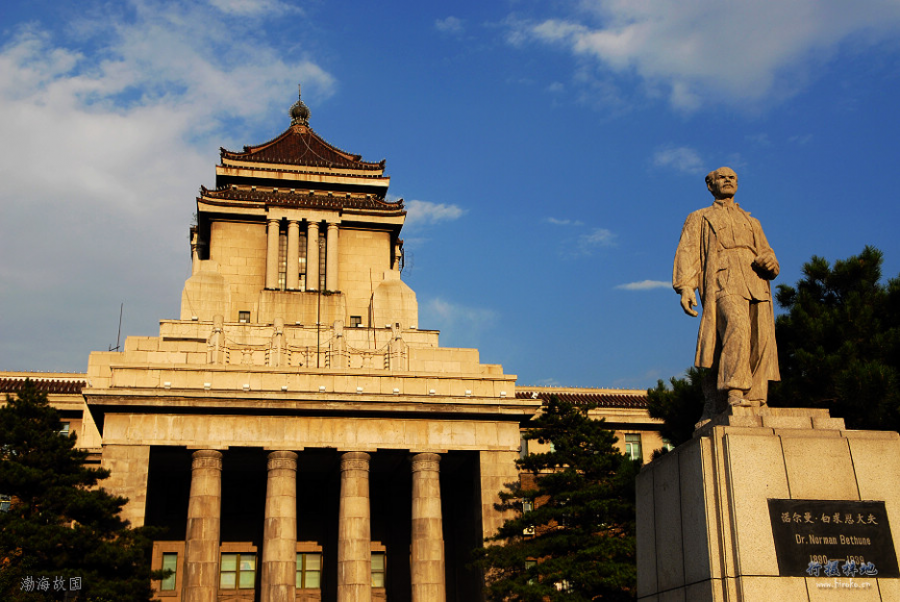
Monument Donation
But enough about the revolutionary himself. How did Montreal end up erecting a monument in Bethune’s name? The truth is, the city itself didn’t construct the memorial. It was donated in 1976 by the People’s Republic of China when diplomatic relations began with Canada.
The sculpture was allocated to the city of Montreal, as Bethune resided in the metropolitan area, where he honed his skills as a surgeon before traveling to Spain and later, to China. . He also organized painting classes for disadvantaged children in the neighbourhood. In the 70s, when Loyola College and Sir George Williams University merged, the administration of what is now Concordia University debated on renaming the school after Bethune.
For three decades, Bethune’s statue stood isolated in the middle of traffic on Guy Street.
It was only in 2008 that the City of Montreal undertook a $3 million renovation project of the Norman Bethune Square.
In 2009, the statue was moved to a more quiet part of De Maisonneuve Boulevard next to the Tim Hortons we all know and love.
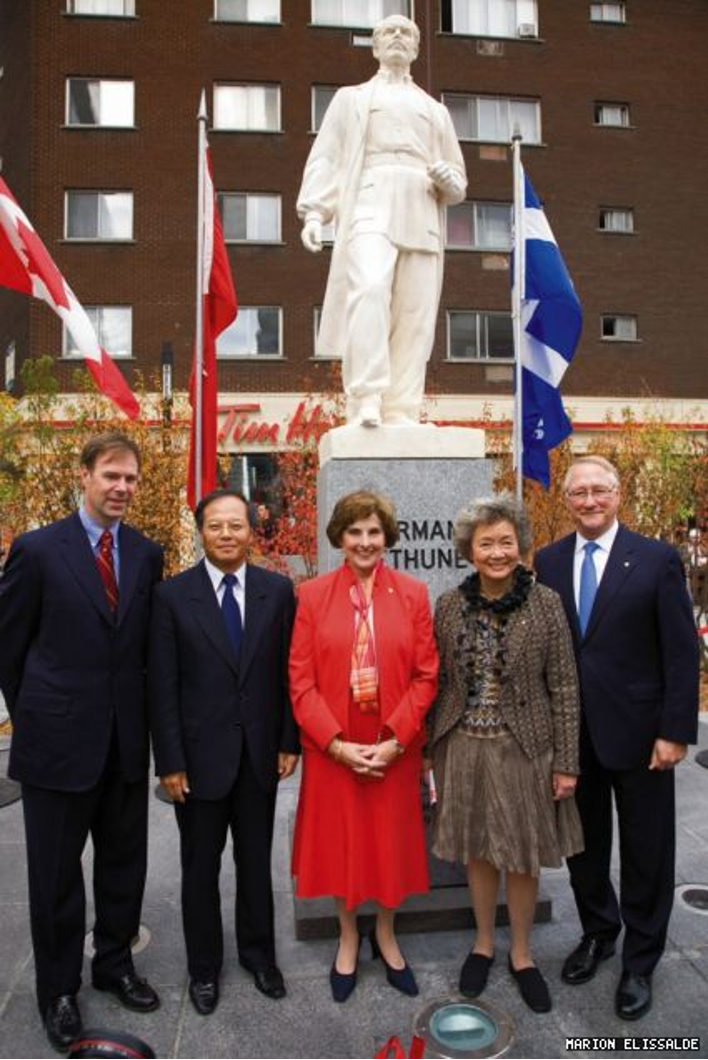
Monument Then and Now Comparison
The Bethune monument has remained untouched or vandalised by graffiti since its arrival to Canada decades ago, possibly because he remains an unknown figure in our history books.
This cannot be said for other memorials related to Bethune. His communist ideals have caused a lot of controversy in the public eye and in the media. For example, in 1974, three Toronto men were arrested for unscrewing a historical plaque from its stand in front of Bethune’s former Ontario home.
The statue itself has also become a popular spot for protest gatherings, perhaps indirectly in spirit to Bethune’s devotion to social justice. At least, that’s what I like to think.
While Bethune’s legacy might be lost to time in Canada, the monument is far from being lonely, with pigeons resting on top of the statue’s bald marble head. Hopefully, I have done Bethune the service he deserves by recounting the history behind the man and the sculpture in his name. Sometimes, historical figures hide in plain sight, and it only takes a spark of curiosity to understand why certain monuments arrived where they are today.
This article originally appeared in Volume 43, Issue 3, published September 27, 2022.

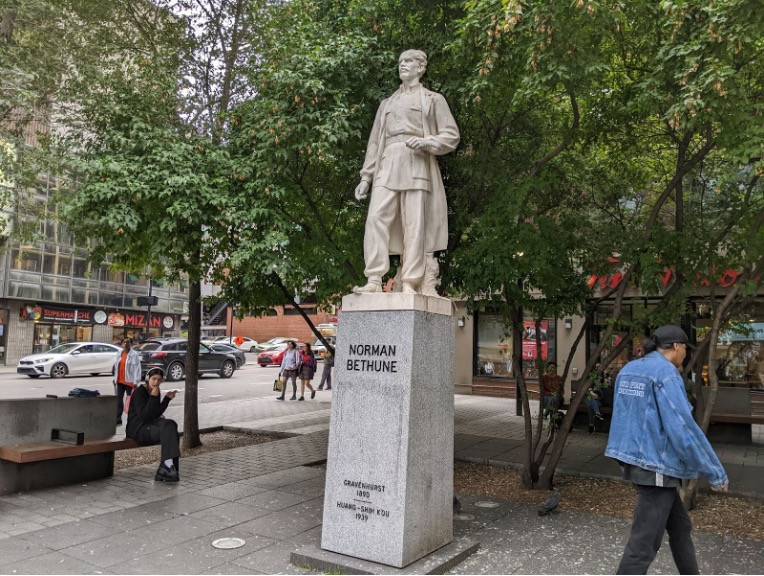
_600_832_s.png)

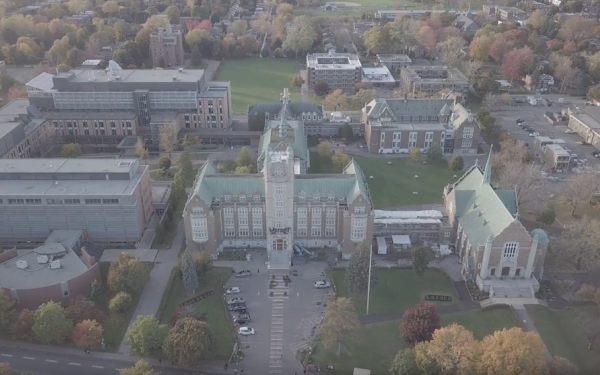


_600_375_90_s_c1.jpg)